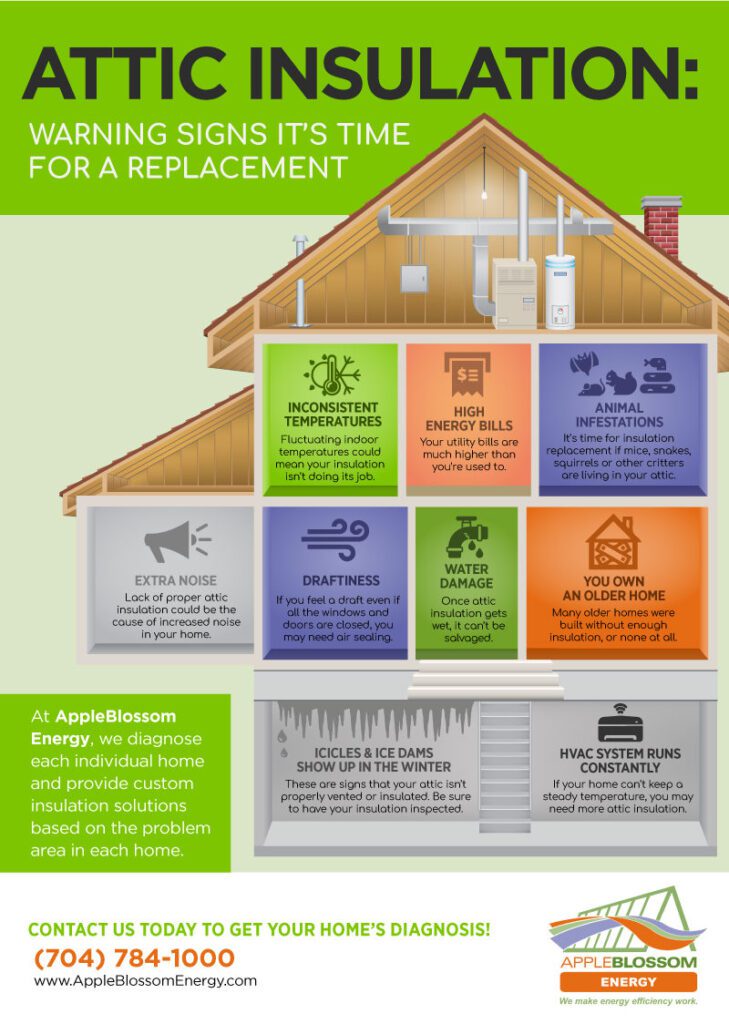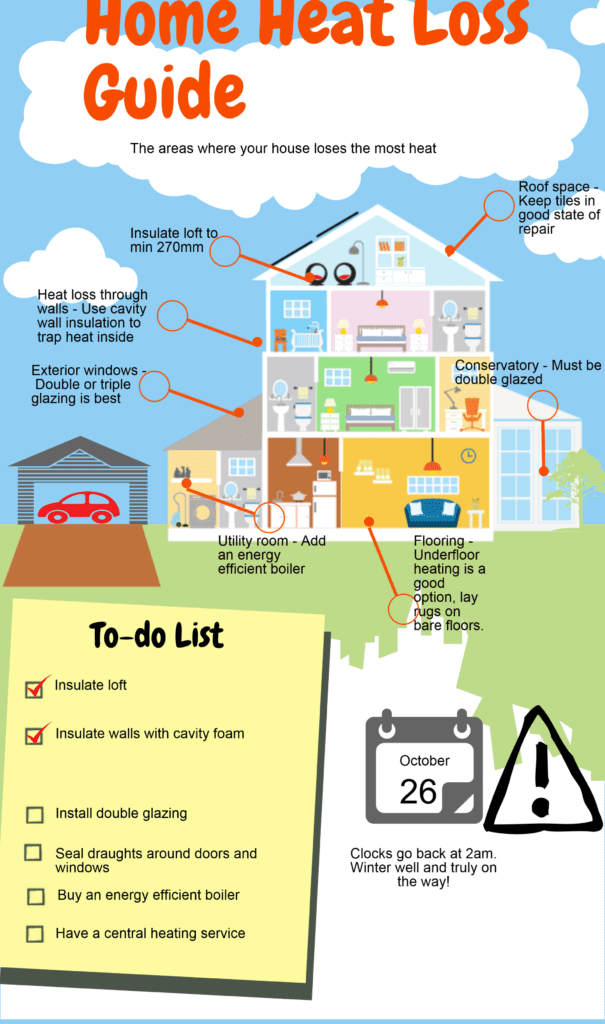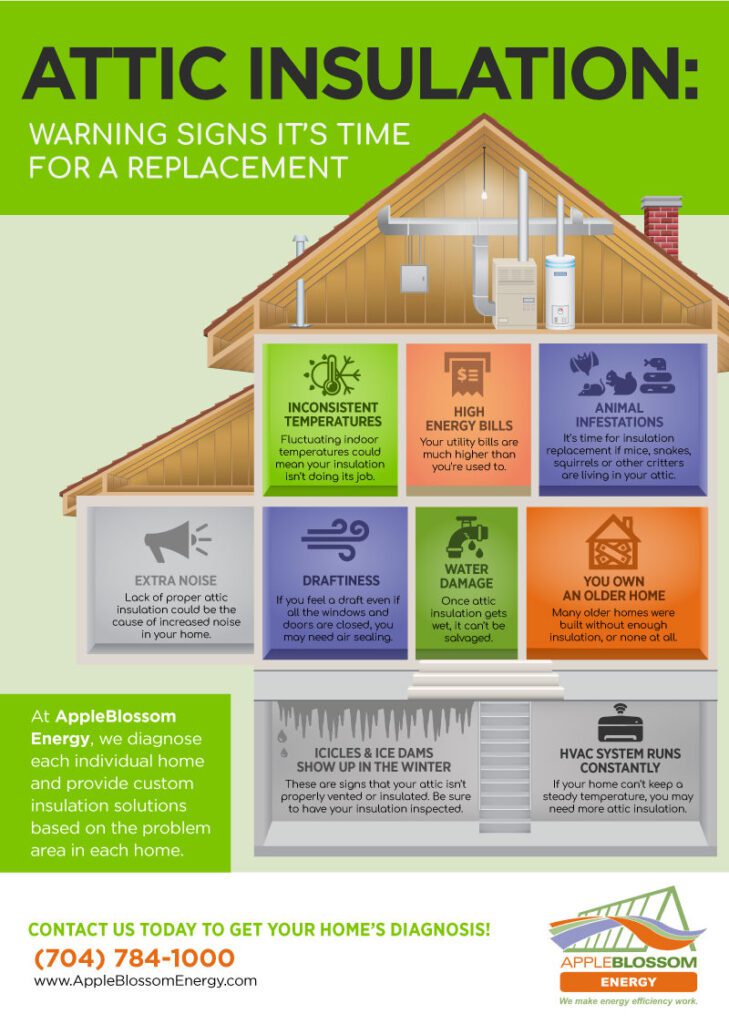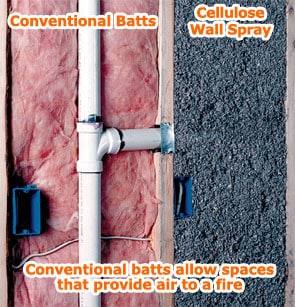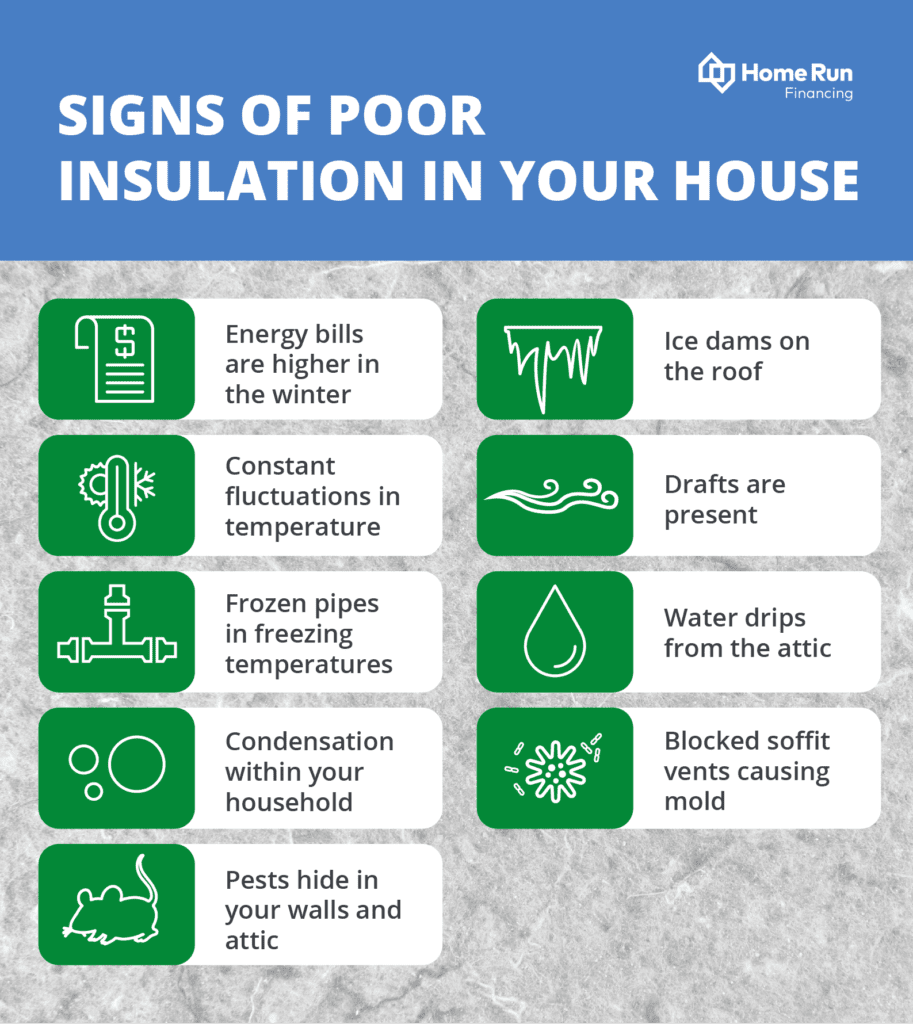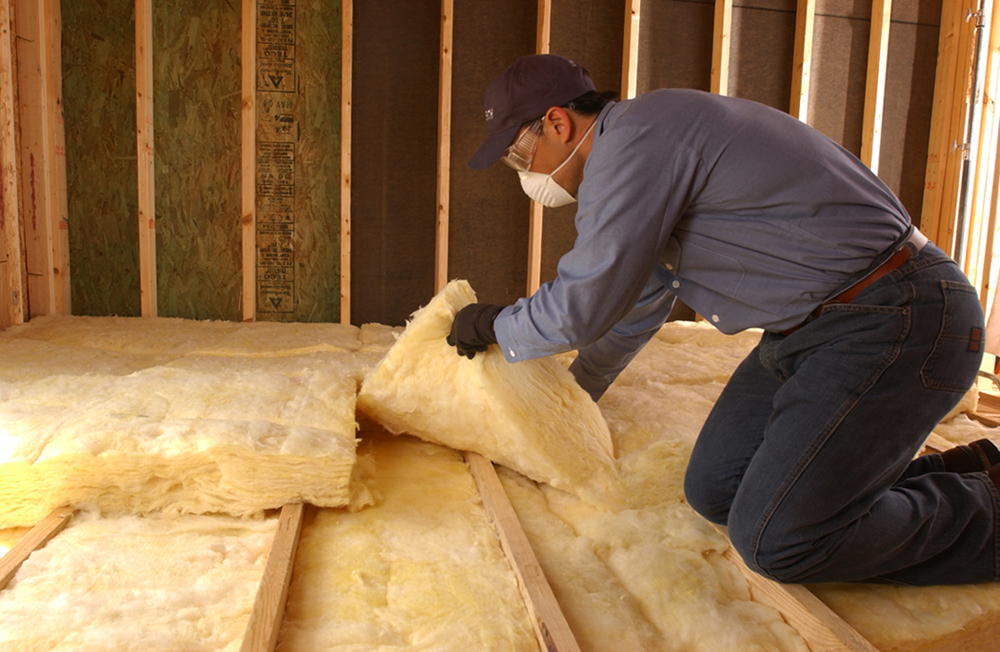Are you wondering whether your home’s insulation is up to par? If so, it’s important to recognize the signs of poor insulation. Inadequate insulation can lead to a variety of issues such as higher energy bills, uncomfortable indoor temperatures, and even potential health risks. From drafts and uneven temperatures to excessive moisture and increased noise levels, understanding the signs of poor insulation can help you take the necessary steps to improve your home’s energy efficiency and overall comfort. So, keep reading to find out what to look out for when it comes to poor insulation.


High Energy Bills
One of the most obvious signs of poor insulation in your home is skyrocketing energy bills. When your home lacks proper insulation, it becomes challenging to maintain a consistent indoor temperature. As a result, your heating and cooling systems have to work much harder and for longer periods to compensate for the heat transfer. This increased workload leads to a significant increase in your energy consumption, ultimately reflected in your monthly bills. If you notice a sudden spike in your energy bills, it could be a clear indication that your home’s insulation needs improvement.
Uneven Room Temperatures
Another sign of poor insulation is uneven room temperatures throughout your home. You may find that certain rooms or areas feel significantly colder or hotter than others. This discrepancy is often caused by heat escaping through poorly insulated walls, ceilings, or floors. As a result, your HVAC system struggles to distribute the conditioned air evenly, leading to uncomfortable living conditions. If you experience drastic temperature differences from one room to another, it’s time to assess the insulation in your home and address any issues.
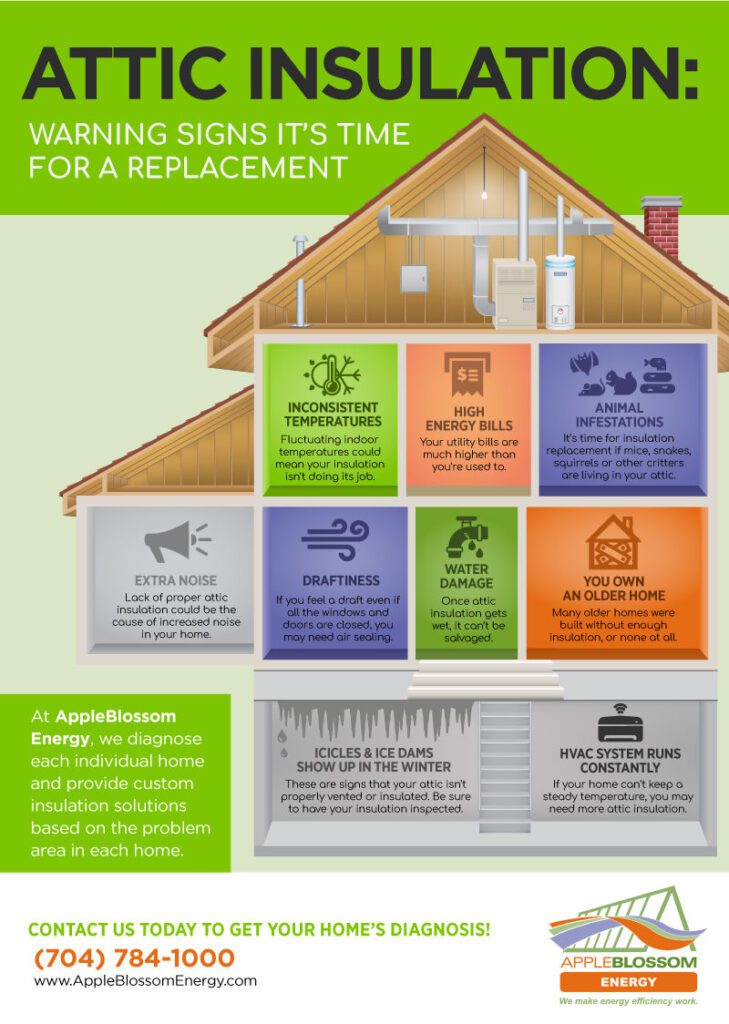

Drafts or Cold Spots
Drafts or cold spots are areas in your home where you can feel cold air seeping in during the winter months. These unwelcome cold gusts are a clear indication that your insulation is inadequate. There are specific common areas where drafts tend to be more prominent.
Under Windows and Doors
Windows and doors are notorious culprits when it comes to drafts. Inefficiently sealed windows and gaps around doors can allow cold air to infiltrate your living space, creating uncomfortable drafts and driving up your energy bills. Poor insulation around windows and doors can often be easily remedied by sealing gaps with weatherstripping or caulk.
Around Electrical Outlets
You may not realize it, but electrical outlets can be a source of heat loss and cold drafts in your home. When they are not properly insulated, air can flow through the gaps between the electrical box and the wall, leading to drafts. Consider installing foam gaskets behind the outlet covers to provide insulation and eliminate this problem.
Around Pipes and Vents
Pipes that pass through walls or vents that connect to the outside can be additional entry points for drafts into your home. Poorly insulated pipes and ventilation ducts can allow cold air to infiltrate and create uncomfortable spots. Insulating these areas with appropriate materials, such as pipe insulation or expanding foam, can help prevent drafts and improve the overall comfort of your home.
Excessive Heat or Cold Transfer
If your home’s insulation is inadequate, you may notice excessive heat or cold transfer through its walls, ceilings, or floors. During hot summer months, the outside heat can penetrate your home, making it difficult to keep the interior cool. Similarly, during winter, the cold outside air can infiltrate your home, causing a constant battle to maintain warmth. This fluctuation in temperature not only affects your comfort but also puts a strain on your HVAC system, leading to higher energy consumption. Proper insulation acts as a barrier to heat transfer, helping to create a more comfortable and energy-efficient living environment.


Mold or Moisture Issues
Poor insulation can contribute to mold growth and moisture-related problems in your home. When warm, moist air comes into contact with cold surfaces such as walls or windows, condensation can form, creating a prime breeding ground for mold. If left unaddressed, mold can pose serious health risks and compromise the structural integrity of your home. Recognizing the following signs can help you identify potential mold or moisture issues caused by poor insulation.
Condensation on Windows
If you notice condensation forming on your windows, especially during colder months, it indicates a humidity imbalance in your home. Poor insulation allows warm air to escape, resulting in cooler indoor surfaces that cause condensation. This excess moisture can lead to mold growth and damage to window frames and sills.
Peeling Paint or Wallpaper
Peeling paint or wallpaper can also be a sign of moisture-related problems due to poor insulation. When moisture-laden air is trapped inside your walls, it can cause the paint or wallpaper to bubble, crack, or peel. This unsightly and damaging effect not only requires cosmetic repairs but also indicates the need for improved insulation to prevent further moisture issues.
Musty Odors
A musty odor that persists despite your best cleaning efforts may indicate the presence of mold or mildew caused by poor insulation. Moisture trapped within the walls or other areas of your home can create the perfect environment for fungi to grow and release an unpleasant smell. Addressing the underlying insulation issues is crucial to eliminate the moisture problem and make your home a healthier living space.
Pest Invasion
Poor insulation can lead to unwanted guests in your home in the form of pests. Small cracks and gaps throughout your home’s exterior provide easy access for insects and rodents seeking shelter and food. These tiny openings may go unnoticed, but pests can find them easily and make their way indoors. If you start noticing increased insect or rodent activity, it’s wise to inspect your home’s insulation and seal any gaps to prevent a full-blown infestation.
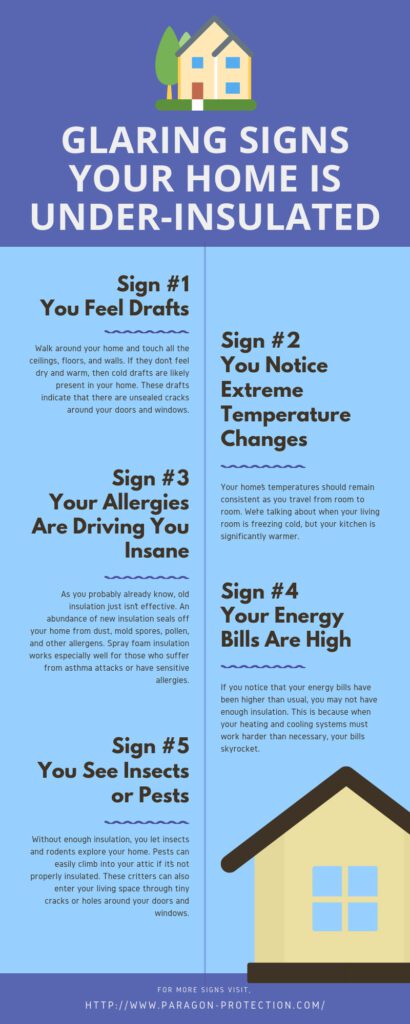

Ice Dams
If you live in a region with cold winters, you may be familiar with the phenomenon of ice dams. Ice dams occur when heat escapes through your roof, causing the snow on top to melt and then refreeze at the roof’s edge. This creates a barrier of ice, trapping more snowmelt and potentially leading to leaks and water damage inside your home. Proper insulation in your attic and roof can prevent heat transfer and the formation of ice dams, saving you from potential costly repairs.
Excessive Noise
Do you find that outdoor noises, such as traffic or neighbors, are disturbing your peace inside your home? Poor insulation can contribute to a noisy living environment. Insulation not only helps regulate temperature but also acts as a sound barrier, preventing excessive noise from entering or leaving your home. If you’re tired of noisy disruptions, improving your home’s insulation can significantly reduce unwanted sound transmission and create a quieter living space.
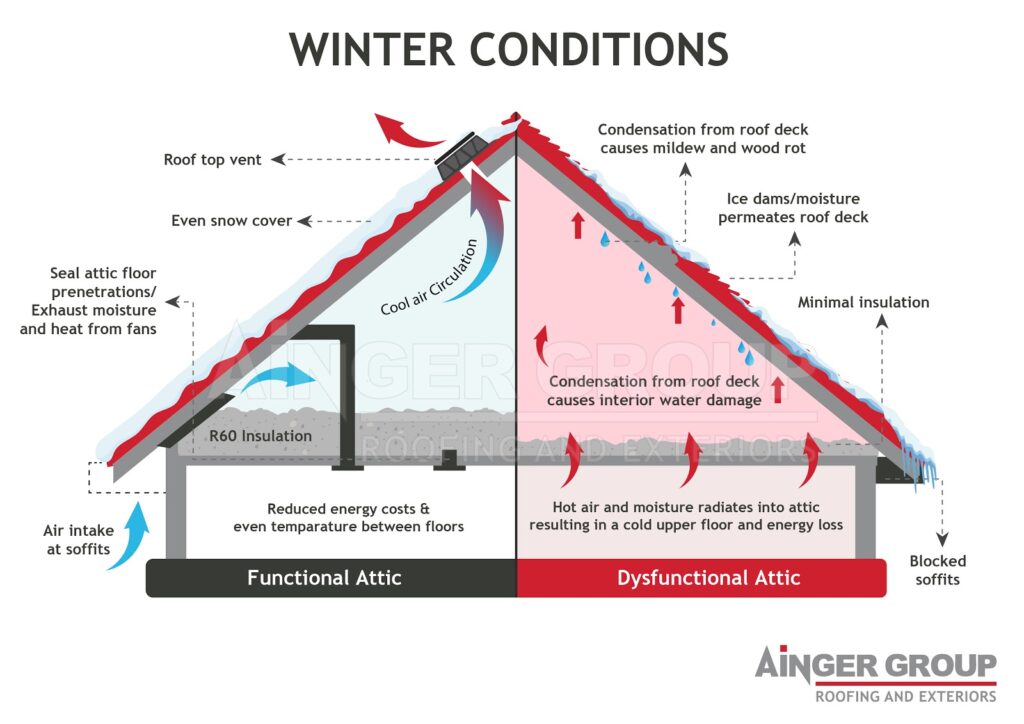

Health Issues
Poor insulation can have adverse effects on your health. Inadequate insulation allows drafts, moisture, and mold to enter your home, which can aggravate respiratory issues such as allergies or asthma. Additionally, fluctuating temperatures caused by poor insulation can lead to physical discomfort, sleep disturbances, and increased susceptibility to colds and viruses. Prioritizing proper insulation in your home can help protect your health and create a safe and comfortable living environment.
Higher Carbon Footprint
Lastly, poor insulation contributes to a higher carbon footprint. When your home lacks efficient insulation, your heating and cooling systems have to work harder and consume more energy to compensate for the heat transfer. This increased energy consumption not only puts a strain on the environment but also leads to higher greenhouse gas emissions. By improving your home’s insulation, you can significantly reduce your carbon footprint, conserve energy, and contribute to a more sustainable future.
In conclusion, recognizing the signs of poor insulation is crucial in maintaining a comfortable, energy-efficient, and healthy home. High energy bills, uneven room temperatures, drafts or cold spots, excessive heat or cold transfer, mold or moisture issues, pest invasion, ice dams, excessive noise, health issues, and a higher carbon footprint are all warning signs that your home’s insulation requires attention. By addressing these issues and investing in proper insulation, you can enhance your home’s comfort, save on energy costs, and contribute to a more sustainable living environment.

